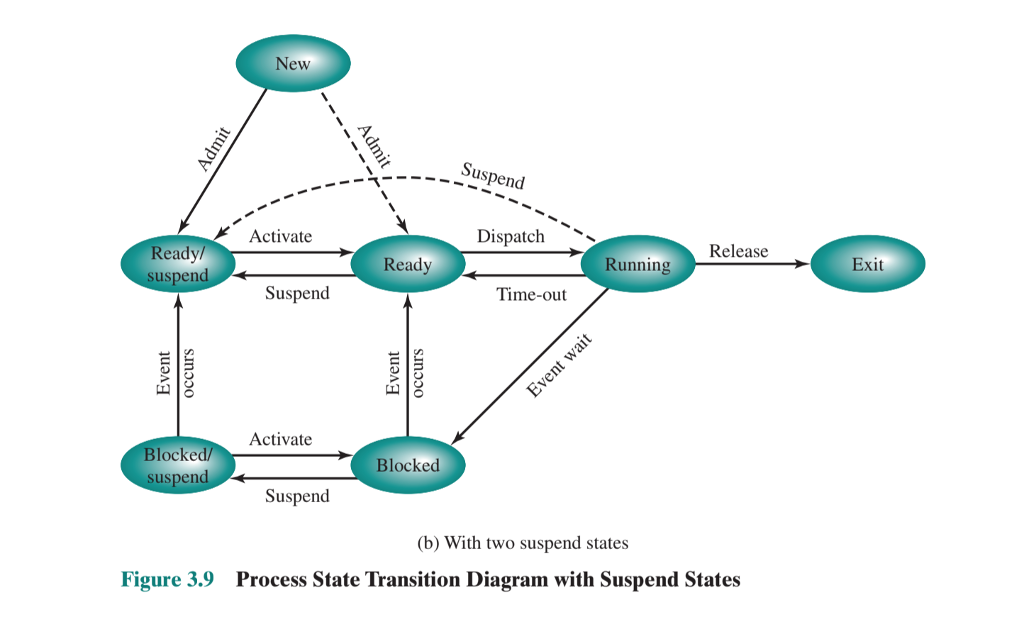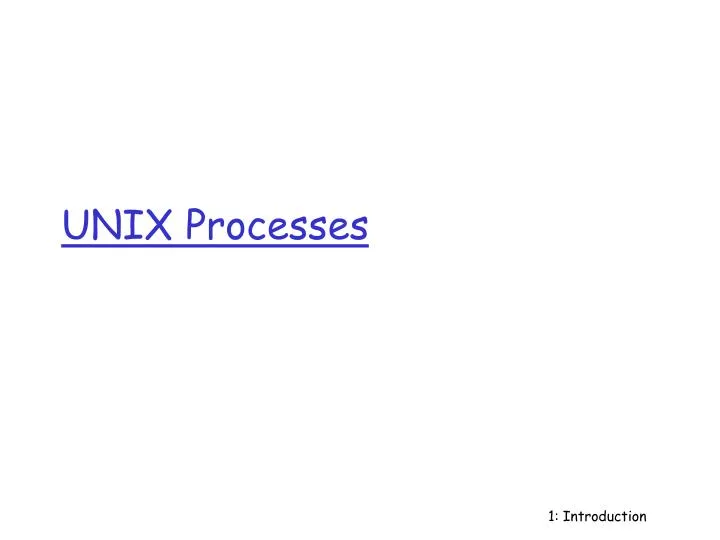

- #Unix processes states how to
- #Unix processes states code
We have a number of tools in our arsenal to find out what a frozen process is doing. It’s better to figure out the root cause. Killing it just fixes the symptoms, and should be considered a final defense in the war against frozen processes.
#Unix processes states how to
Obviously fixing a frozen process involves more than figuring out how to automatically kill it. It’s waiting for an external process or a server, be it the database, an HTTP API server, or whatever. The process is stuck in an I/O operation.In development you only had a handful of rows so you never noticed this, but you forgot that in production you have millions of rows.
#Unix processes states code
For example you may have code that iterates through all database table rows to perform a calculation. It is performing an unoptimized operation that takes a long time. In this case you should notice the entire system becoming slow.Ģ.2. It is using too much memory, causing it to hit the swap.
The process is very slow, even during shutdown, causing it to appear frozen. In practice we rarely see this kind of freeze. The process is stuck in an infinite loop. They appear stuck inside something and are not throwing errors. A process is often considered frozen if it has stopped responding normally. In this article we’re only covering frozen processes, not zombie processes. In any case, zombie processes are harmless. The latter causes the zombie process to be “adopted” by the init process (PID 1), which immediately calls waitpid() on any adopted processes. The only way to get rid of them is to either make the parent process call waitpid() on them, or by terminating the parent process. Killing them – even with SIGKILL – has no effect. Zombie processes do not consume memory or CPU. Zombie processes show up in ps and on Linux they have “” appended to their names. Formally, a zombie process as defined by Unix operating systems is a process that has already exited, but its parent process has not waited for its exit yet. Frozen processes are sometimes also called zombie processes, but this is not formally correct. This article attempts to be generic, but will also provide Ruby-specific tips. How is Phusion Passenger’s frozen process killing fix implemented, and under what constraints does it work?. 
 Why was Phusion Passenger not immune to the problem of frozen processes?. Phusion Passenger) automatically cleanup frozen processes? What facilities does Unix provide to control and to shut down processes?. What causes a process to become frozen and how can you debug them?. Some of the questions answered by this article include: In this article we’re going to dive into the operating system-level details of frozen processes. Today, I’d like to take this opportunity to share some of our knowledge with our readers. It’s going into the open source version, not just Phusion Passenger Enterprise, because we believe this is an important change that should benefit the entire community.īehind our solution lies an array of knowledge about operating systems, process management and Unix. That is until today, because we have just implemented a fix which will be part of Phusion Passenger 4.0 (4.0 hasn’t been released yet, but a first beta will appear soon). Phusion Passenger 3 – our high-performance and advanced web application server – was not completely immune to this problem either. They just sit around, consuming CPU and/or memory indefinitely until you forcefully shut them down. Those who administer production Unix systems have undoubtedly encountered the problem of frozen processes before.
Why was Phusion Passenger not immune to the problem of frozen processes?. Phusion Passenger) automatically cleanup frozen processes? What facilities does Unix provide to control and to shut down processes?. What causes a process to become frozen and how can you debug them?. Some of the questions answered by this article include: In this article we’re going to dive into the operating system-level details of frozen processes. Today, I’d like to take this opportunity to share some of our knowledge with our readers. It’s going into the open source version, not just Phusion Passenger Enterprise, because we believe this is an important change that should benefit the entire community.īehind our solution lies an array of knowledge about operating systems, process management and Unix. That is until today, because we have just implemented a fix which will be part of Phusion Passenger 4.0 (4.0 hasn’t been released yet, but a first beta will appear soon). Phusion Passenger 3 – our high-performance and advanced web application server – was not completely immune to this problem either. They just sit around, consuming CPU and/or memory indefinitely until you forcefully shut them down. Those who administer production Unix systems have undoubtedly encountered the problem of frozen processes before.







 0 kommentar(er)
0 kommentar(er)
